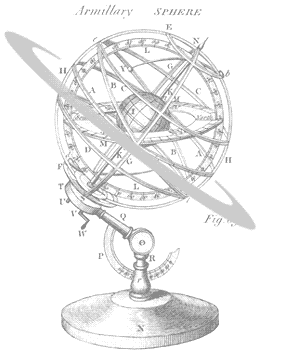
|
Astronomical Instruments:
| Readings: Schneider & Arny: Units 26, 27, 28, 29, 30 |
| (Audio Lecture) |
The elegant rings and bands of an armillary sphere (below) symbolize the astronomy of the past. The armillary sphere takes its name from the Latin armilla, meaning a bracelet or metal ring. With the Earth located at the center, the rings trace out what an observer sees in the night sky without a telescope. The outer band, that supports the device, shows the observers horizon and the meridian. Inside these bands is a cagelike assembly of rings that rotate to display the diurnal motion of the stars. The zodiac is represented by a broad band marked with the 12 signs.

Locating stars and measuring their positions precisely is no simple task. One of the earliest astronomical instruments is the quadrant, shown below, which measures a stars altitude above the horizon. A quadrant acquires its name by its ability to measure within a quarter circle. Using spherical trigonometry, the zenith distance could then be used to calculate a stars celestial longitude and latitude. Quadrants made of metal allowed finer intervals to be ruled for more precise measurements.
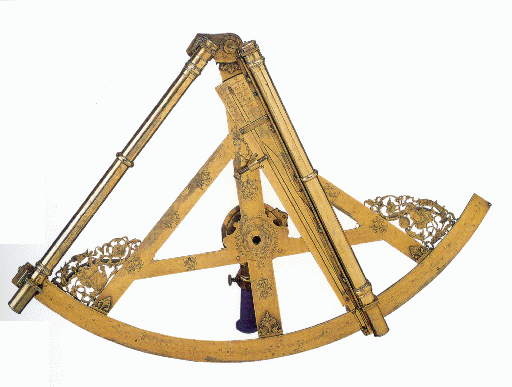
The astrolabe was a sophisticated time-telling instrument of late antiquity. It was an all-in-one tool for calculating the position of the Sun (thus, local time) and various stars. The typical astrolabe has a rotating cutaway disk, called the rete, that represents the heavens as they revolve around us. Labeled points represent stars, the solid band is the zodiac. A plate, or tympan, is fixed beneath the rete and is inscribed with altitude and azimuth coordinates for the particular latitude where the astrolabe is used. Since the astrolabe displays the coordinates of various bright stars, it can also be used to determine the time at night when the Sun is not visible. Astrolabes were of particular interest to the ancient Muslim culture since it provided the direction to Mecca for daily prayers.
The mechanized planetarium, one of the most popular scientific tools of the 1700's, displayed the motion of the planets around the Sun. The operation of the device's carefully crafted mechanisms inspired awe and wonder at the sense of the Universe's divinely imposed stable order. Astronomical knowledge was a mark of education and social status and the ownership of a planetaria gave material evidence of such status. The planetaria below was constructed for King George II.
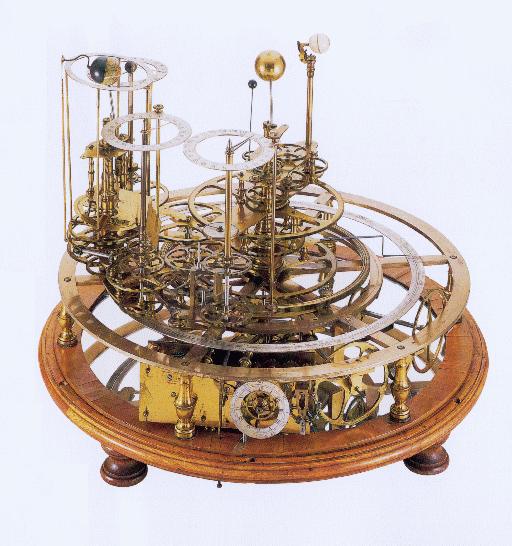
Because both Asian and European astronomers lived in the norther hemisphere, constellations were missing around the South Celestial Pole until expeditions to the New World. Shown below, astronomer Amerigo Vespucci maps the Southern Cross (Crux) in 1589.

In ancient China, astronomers held high social position with close connections to the imperial court. Many of the same astronomical instruments used in Europe were also used by Chinese astronomers as shown in the pictograph below. Astronomical knowledge passed from India to China (in return magnetized compass needles were sent to Europe so that Western navigators could sail the open seas).
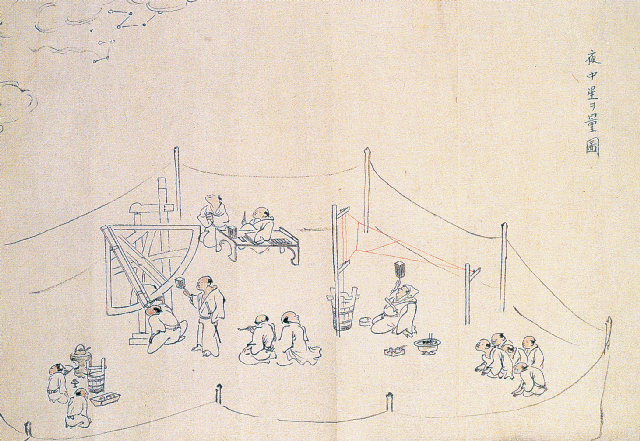
Chinese astronomers emphasized the close relationship between heaven and Earth. They believed that events in heaven reflected those on the Earth. For example, new occurrences, such as a novae, signaled important changes on Earth. Chinese star charts, shown below, divided the stars into `lunar mansions', similar to constellations. The Milky Way was referred to as the `Yellow River', linking them both to seasonal rainfall.
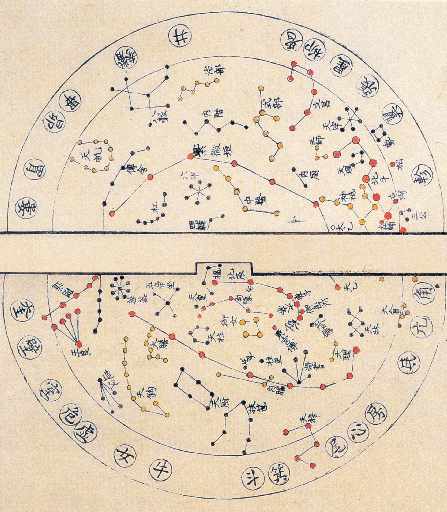
The development of larger telescopes, like Herschel's first telescope shown below, allowed the discovery of many stars invisible to the naked eye.
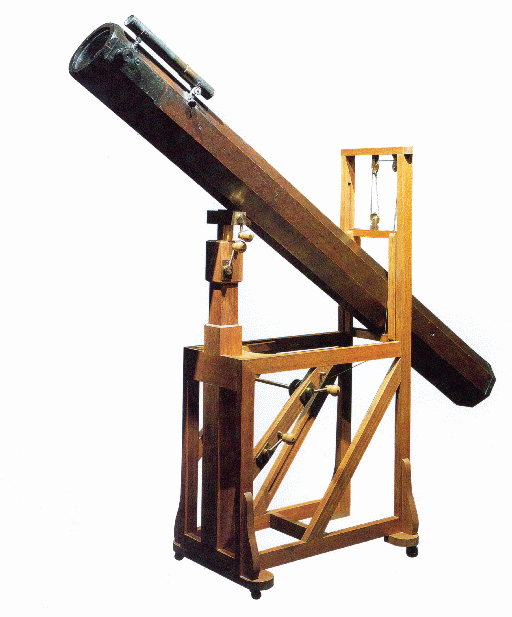
Stars now filled the areas of the sky that previously seemed empty. By the start of the 19th century, pictorial celestial atlases became impractical, even though astronomers continued to make up new constellations.
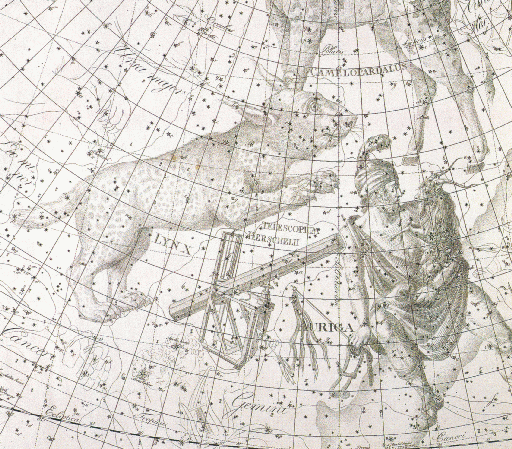
Star charts evolved into those that featured the stars as austere points sometimes with boundary lines dividing the sky into regions defined by their old constellation names. Star charts for the general public continued to feature the faint outlines of the earlier star charts, but later took on more geometric shapes.
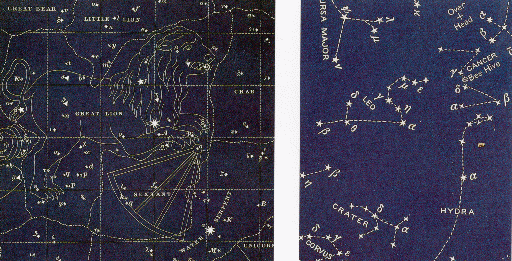
One of the jobs for astronomers in the 17th and 18th centuries was to educate the public on unusual astronomical events, such as comets and eclipses. Typically this was done using printed information sheets called broadsides. The broadside below explains the science behind a total eclipse of the Sun.
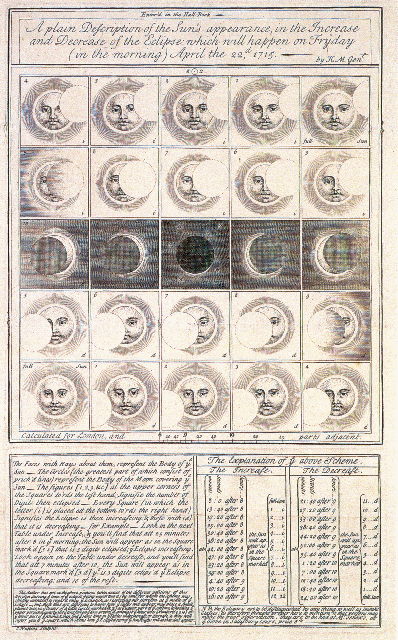
Observatories:
The first need for astronomical observatories was time and calendar keeping. Ancient civilizations referenced astronomical events to mark the reigns of various kings. Civil calendars were derived from the lunar calendar sometime in the 3rd millennium B.C.
The Egyptians constructed the pyramids for tracking Sirius, the Dog Star, in the sky. When Sirius became visible above the horizon, then it was known that the Nile was going to flood, an important time to plant crops.

In Mesopotamia ziggurats were constructed of mud brick to observe the position of the Moon and planets, again to mark the passage of time.
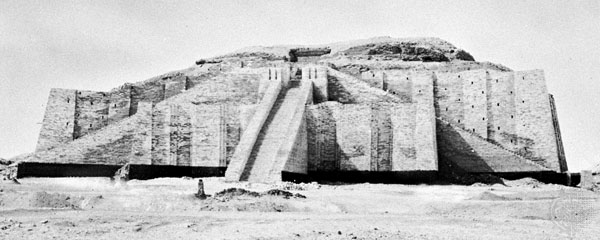
However, no astronomical instruments appears to be used other than the buildings themselves. The first extensive system of astronomical tools was Stonehenge.
The job of early observatories was to map the sky, so the earliest astronomical instrument was the quadrant or sextant. Using these instruments, Hipparchus at Rhodes (150 B.C.) produced the first star catalog, measured precession and developed the magnitude system of stellar brightness. Islamic observatories at Damascus and Baghdad tested our first solar system models.
The first modern observatory was constructed in Denmark by Tycho Brahe in 1576.
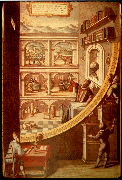
With the invention of optics, observatories added telescopes to their collection of instruments. Telescopes serve to 1) magnify nearby planets, to study surface features, 2) collect light to detect faint stars and 3) transfer light to recording instruments, such as a photographic plate to take a picture, or to a spectrograph to take a spectrum.
Due to effects of the atmosphere, telescopes are typically located on mountain tops because
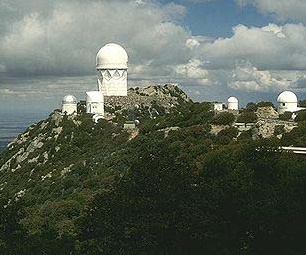
Optical astronomy has dominated for centuries until the development of space telescopes. To observe at high energies (gamma and x-rays) or in the far-IR and microwave regions of the spectrum, the telescope must be located above the Earth's atmosphere.
For example, this orbiting IR telescope, launched in 1994:

The AXAF x-ray telescope, currently in orbit:
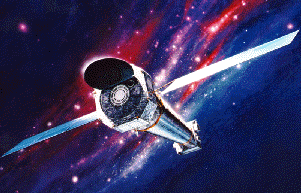
and a shuttle launched gamma-ray telescope
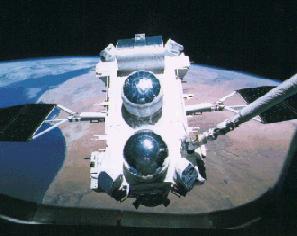
Space observatories have an advantage even in regions of the spectrum that we can see from the ground (i.e. the visible region of the spectrum). Being above the atmosphere means being able to resolve stars and galaxies to much finer detail than ever seen before, and the flagship of space telescopes is the Hubble Space Telescope shown below.
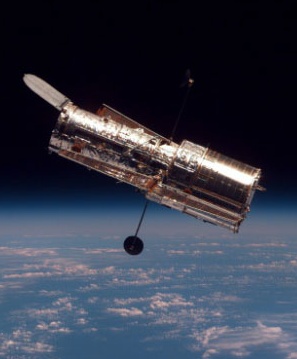

Optical Telescopes:
The simplest telescope is two lens separated by a tube. Since the objective lens (the front lens) refracts the incoming light, this kind of instrument is called a refracting telescope.
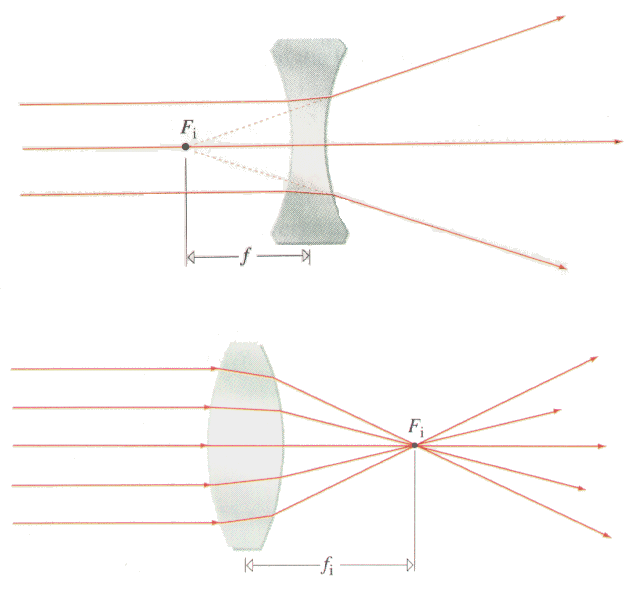
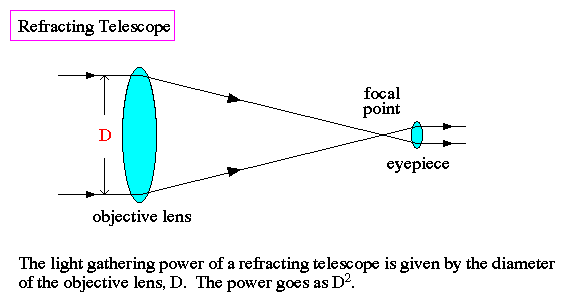
Note that the objective lens brings the incoming light to a focus, and then the eyepiece magnifies that focal region for the eye. So it is a combination of a lens and microscope. Galileo used this type of telescope to discover the phases of Venus and the moons of Jupiter. The type of telescope you would buy today looks like the following:
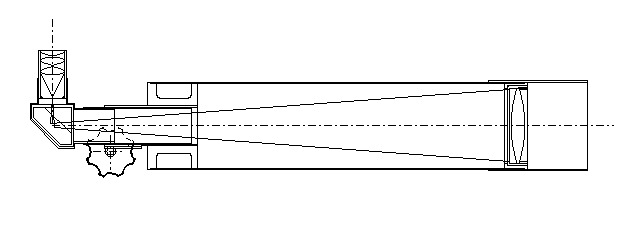
The objective lens is surrounded by a series of baffles to block stray light. A small mirror is placed near the complicated eyepiece to turn the light upward from the telescope for a more comfortable viewing position.
The limitation on refracting telescopes is that glass is only a semi-solid and will deform with time. So very large lens will not stay round, plus they are extremely heavy. For these reasons, the largest refracting telescope is limited to 40 inches in diameter.
In order to build larger telescopes to gather more light to see fainter stars, most optical telescopes employ a reflecting telescope design invented by Newton. In this case, a large concave mirror reflects the incoming light into a focal point. Four different reflecting designs are used, depending on where the focal point is placed.
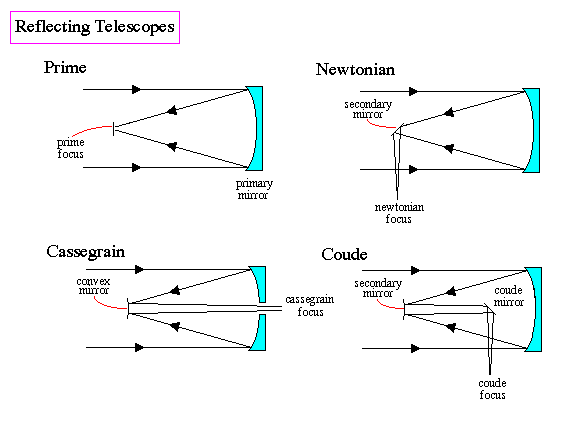
The various focus designs relate to a telescopes use. For example, a prime focus system is poor on small telescopes because your head gets in the way. So most commercial telescopes have a Newtonian design. However, for large telescopes (greater than 2 meters in mirror size), the prime focus system is use since it has a minimal number of optical elements in the way to distort light.
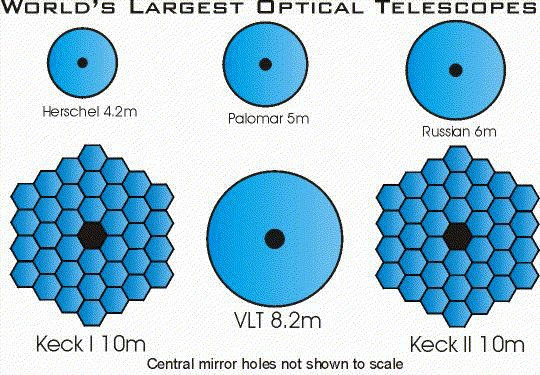
If a heavy instrument is used on the telescope, for example a CCD camera, then the instrument must be placed at the cassegrain focus. If an extremely heavy instrument is used, then the stellar light is reflected down the axis of the telescope into separate machine rooms below the telescope. This is called a Coude design.
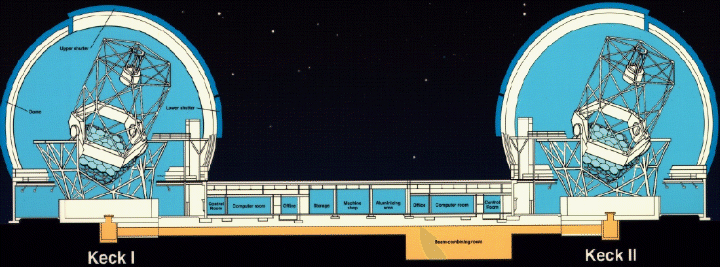
The larger the telescope, the more light gathering power, the fainter the stars you can measure. But there is a limit to the size of a primary mirror given by the ability for glass to support it own weight (it flows and cracks under stress). For a refracting telescope, the limit for the diameter of the objective lens is about 48 inches. For a reflecting telescope, the limit of the size of a single primary mirror is about 8 meters. The Keck twins are the largest telescopes in the world, using a new technology of a segmented primary to make a 10 meter mirror.
Radio Telescopes:
Radio telescopes gather radio waves from stellar objects. Since radio waves are reflected by metal, they are typical made of solid aluminum or steel mesh.
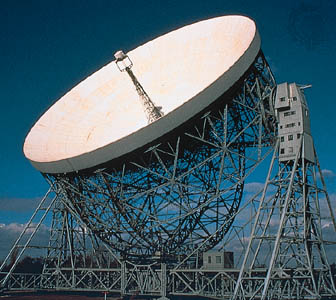
The difference wavelength of the light in the radio region (centimeters and meters) means a different technology to analysis them. In the case of radio astronomy, a sophisticated radio receiver is used such that the power of the telescope is determined by the area of the antenna and the sensitivity of the electronics.
Radio telescopes can also use the phenomenon of interference to obtain high resolution. Many antennas, working together, measure the interference patterns from distant sources and combine them to produce highly detailed maps in the radio region of the spectrum. An example is the Very Large Array shown below.
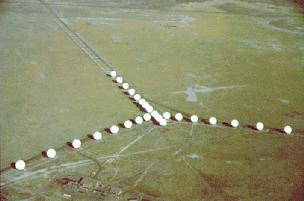
Since radio telescopes are made of metal, and not glass, they can be made very large. An extreme example of this is the Arecibo Telescope in Puerto Rico, strung between two mountain ranges in Puerto Rico.

|
|

|